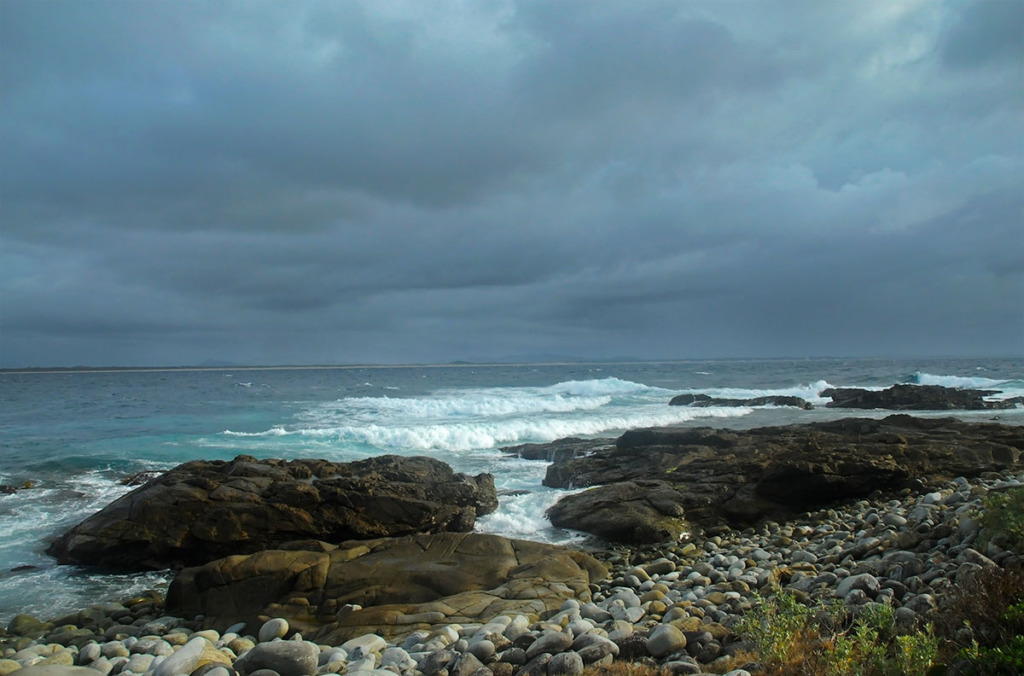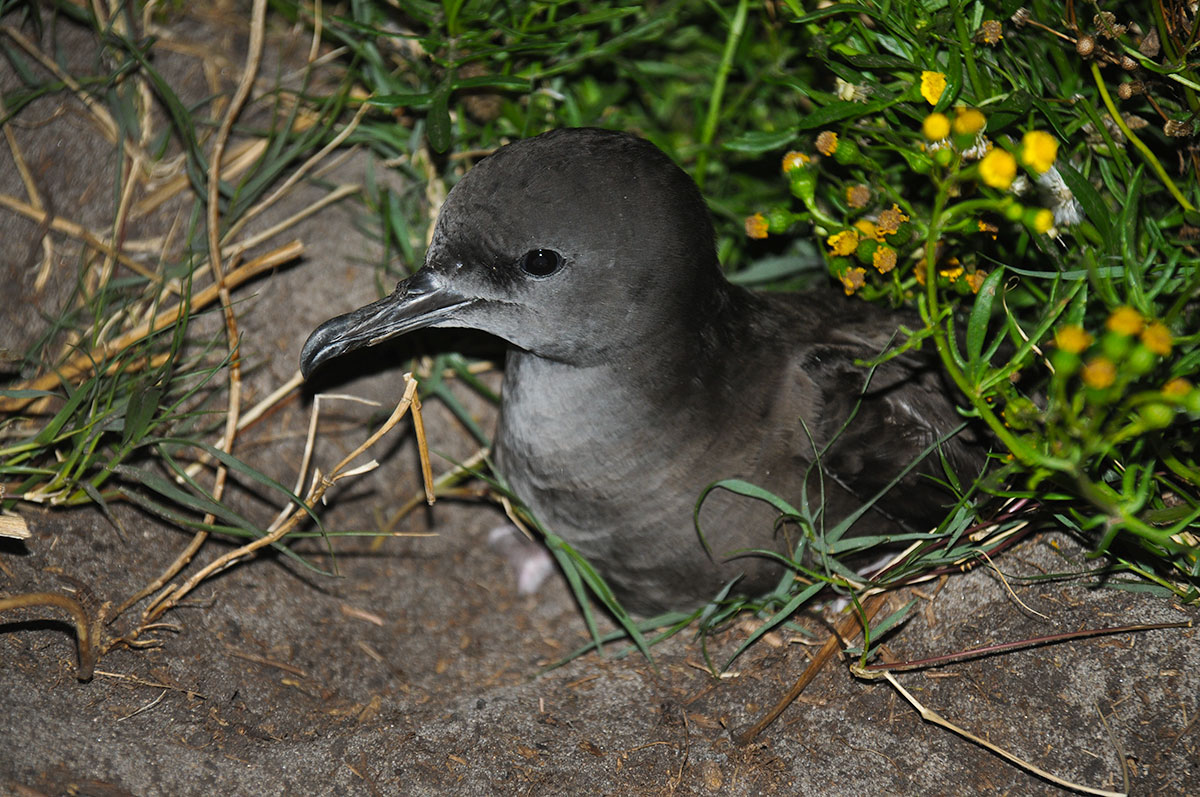In October 2010, I had an opportunity to join a three-day survey of seabird colonies on Little Broughton Island and North Rock island in Port Stephens, on NSW Central Coast about a 2.5hr drive from Sydney.
The survey was run jointly by the National Parks and Wildlife Services (NPWS) of the Hunter Region and the Department of Environment and Climate Change (DECC) of NSW and enlisted the help of some volunteers (lucky for me).
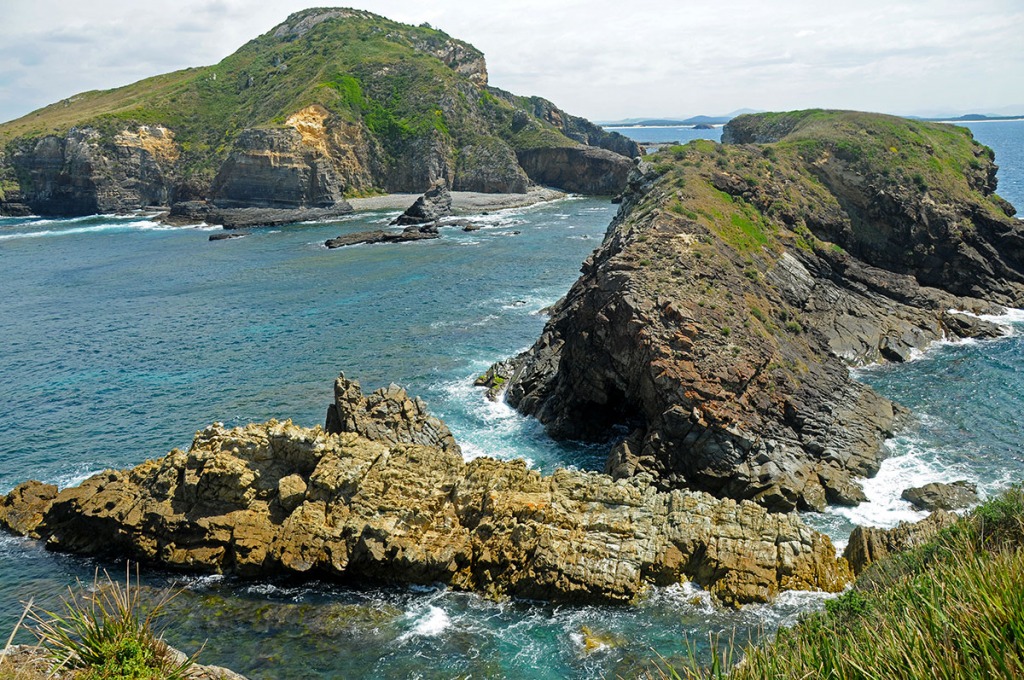
The main aim of this survey was to establish whether the Little Penguins (Eudyptula minor) breed on the islands and to map out the habitat of two species of Shearwater: Short-tailed and Wedge-tailed Shearwater.
The islands that we were going to survey were uninhabited and we were the first people to land on them in the last 30 years. It is hardly surprising, considering how dangerous a zodiac landing on wet rocks can be and how much effort it takes to survey just a few islands.
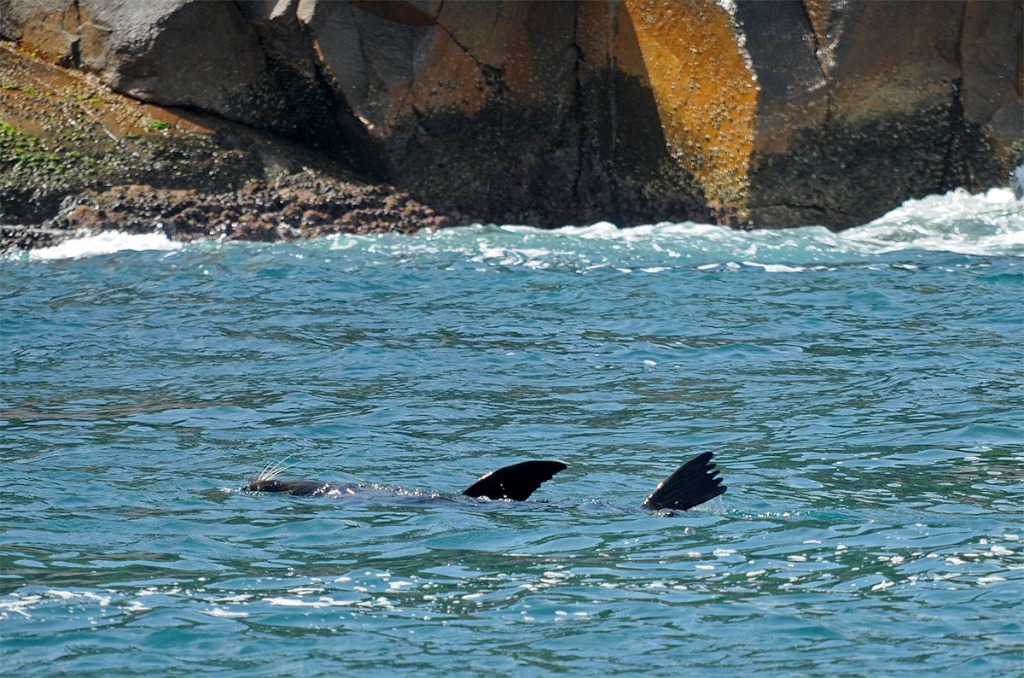
Cruising Port Stephens
On the morning of the first day, Susanne from NPWS’s Hunter office was waiting for me at the marina in Nelson Bay. We loaded my bags and some gear into the boat and set sail for the unknown.
The weather was absolutely beautiful and we saw plenty of wildlife from the boat: Australian pelicans, Australasian garnets, gulls, terns, and even some Australian fur seals, which were a new mammal species for me.
I wished we could see the dolphins, but none showed. I saw them on a Nelson Bay dolphin cruise before and they are some of the most incredible animals to meet in the ocean.
We picked up Nick from DECC and two other volunteers – they all arrived on a small inflatable zodiac that we consequently dragged onto our boat. So all was well, and we were approaching the first island on our itinerary – Little Broughton island.
Feral rats and rabbits have been eradicated from Little Broughton island and the island’s ecosystem has been slowly returning to its ‘native’ state. And as we approached the island, all I could see were the jagged vertical cliffs.
This, however, was expected, so we brought our boat as close to the cliffs as we could and lowered the zodiac into the water. We transferred a bunch of bags and equipment into the zodiac along with a few people and off they went.
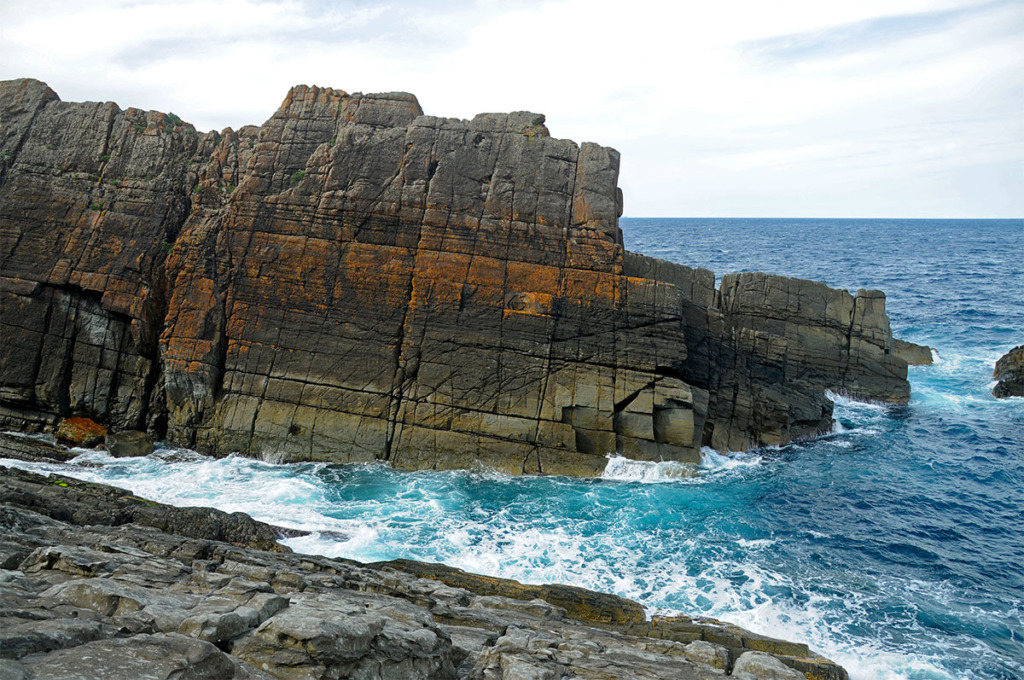
Zodiac Landing
The way a zodiac landing works is you manoeuvre the zodiac so that it rides the wave towards the shore and when it reaches the closest point you jump off and (ideally) land on the rocks. I was so worried about slipping on the rocks and cracking my head open or falling into the water and drowning that when my turn came, I leapt like an absolute natural and didn’t even wet my shoes!
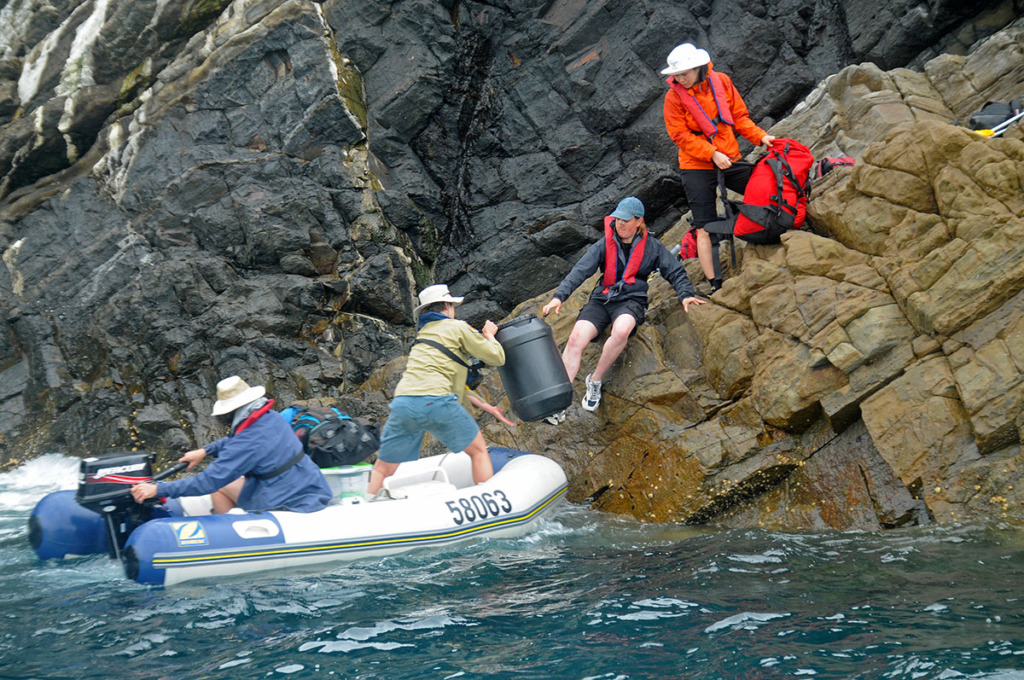
The next challenge was to carry all of our gear up a nearly vertical cliff face. Though I have to say, actually doing it was not as exhausting as thinking about it and not wanting to do it.
No more than half an hour later, we were on top of the cliffs, standing on pretty much the only flat spot on the island. So we figured we would set up camp there. But of course, being an offshore island, this was a nesting seabird paradise. The birds that occupy this island live in the burrows that they dig in the sand. So our camping spot was right in the middle of a shearwater colony. But since the birds are nocturnal, the only signs of their presence during the day were the actual borrows.
Surveying Little Broughton island
Well, we didn’t really take the time to sit around and ponder on the significance of camping in a seabird colony. Instead, we went off on our first surveying mission. The main thing we were looking for this time were the signs of the penguins so that we knew where to set up at night and count them as they emerge from the surf.
We tracked across the entire island, which is a nature reserve, in search of potential penguin landing sites. And while the island was not big, the rough terrain and super-thick vegetation cover made for pretty hard going.
We were the first people in three decades to set foot on this island. And with rabbits gone, the vegetation went through a phenomenal growth stage, which in practice meant that we had to walk through waist-high tussock grass when we were lucky, or through a solid wall of gnarly bushes when we were not so lucky.
As an additional challenge, the sand underneath this vegetation was covered with abandoned nesting burrows that were impossible to see. So as I walked, every other step one of my feet would fall through one of those burrows and unless I was ready for it – I tripped and fell. So just walking around was a pretty strenuous exercise. On the positive side of things, we found at least 3 spots with penguin signs so we were all set for the night watch.
Accidental Whale watching
The arduous walk around the island was not without its perks though. Almost every conversation was interrupted by one of us shouting out: Look, whales! Whales were breaching everywhere. They were on their annual migration travelling down to Antarctica from their breeding grounds in the subtropical coastal waters and most of the adult females had their calves with them.
Mostly they were Humpback whales, but we also spotted a Southern Right female with a calf, which was another new mammal species for me. Other cool species present in large numbers were the White-bellied Sea Eagles. I saw these beautiful birds at Kho Chang in Thailand, but they were usually quite far away. Here they were everywhere.
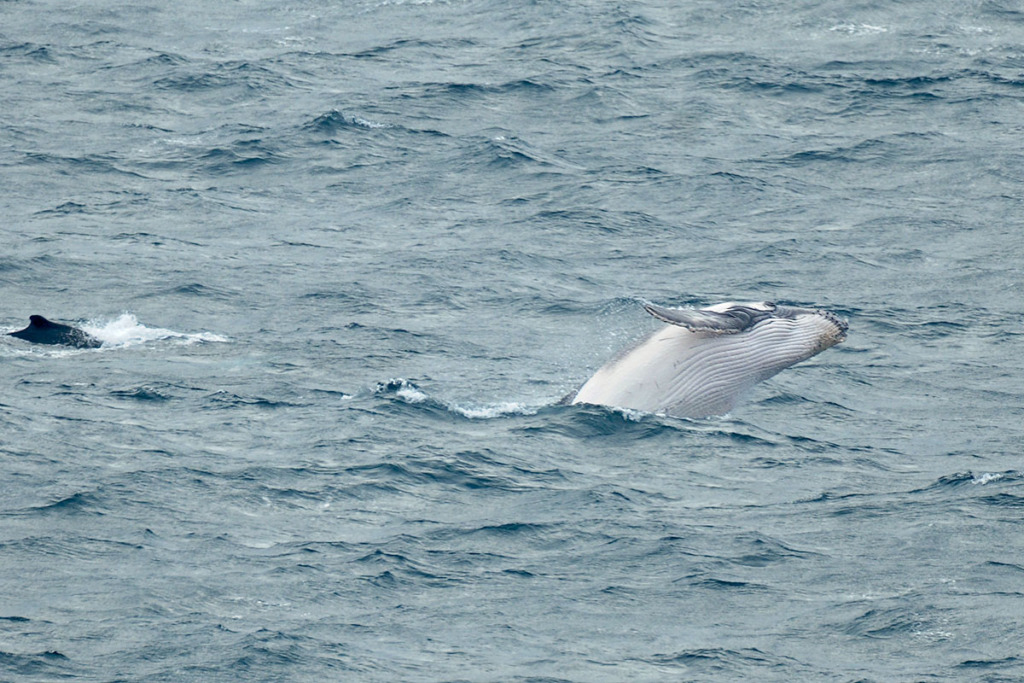
Sheerwaters
Back at the campsite, as we were having lunch, the sand in front of my feet suddenly started to move in violent jerks. It felt like Satan was escaping from hell! But as it turned out, there was a bird burrow there and we must have trampled over it and collapsed some of the sand into it.
With a great effort, a grumpy-looking Short-tailed Shearwater (Puffinus tenuirostris) was digging itself out. It was hilarious. Nick got the bird out and was holding it while he was rebuilding the burrow, and halfway through it, he found another bird inside. So that was our first brush with seabirds at the camping site.
The two species of Shearwater that we saw on the islands are remarkably similar in appearance. They are particularly difficult to tell apart in the dark when they are most active. The main difference between the two is their size.
Wedge-tailed Shearwater is smaller and their beaks are also proportionately longer than those of Short-tailed Shearwater. The two species also have distinct calls.
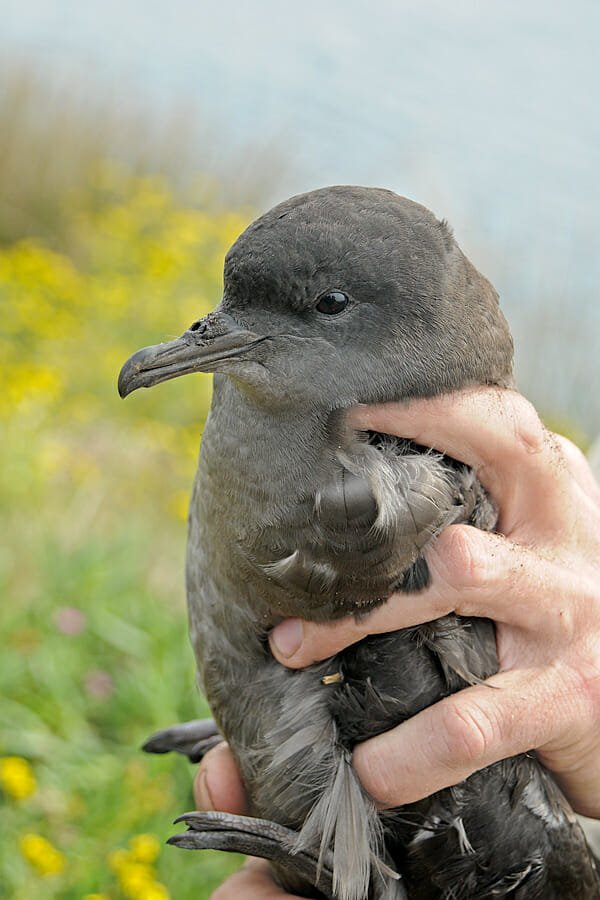
A night on the uninhabited island
As the night approached, we took off for our respective penguin watching spots. Nick took the three of us girls volunteers to the first set of cliffs and we got assigned our ‘counting’ locations.
Lucky me, I got the furthest one! Nick instructions to me were: “OK, Margarita, so you start walking to your site and beware of the thick patch of bush in the middle of the next slope. So climb up the ridge, go across the ridge and then climb down to the bottom of the cliff.”
Sounds easy, but crushing through virgin scrub is a slow process and the light was already fading, so I almost ran, whenever it was physically possible, as if I was about to lose in the final challenge of the Amazing Race. I made it with just a few seconds to spare.
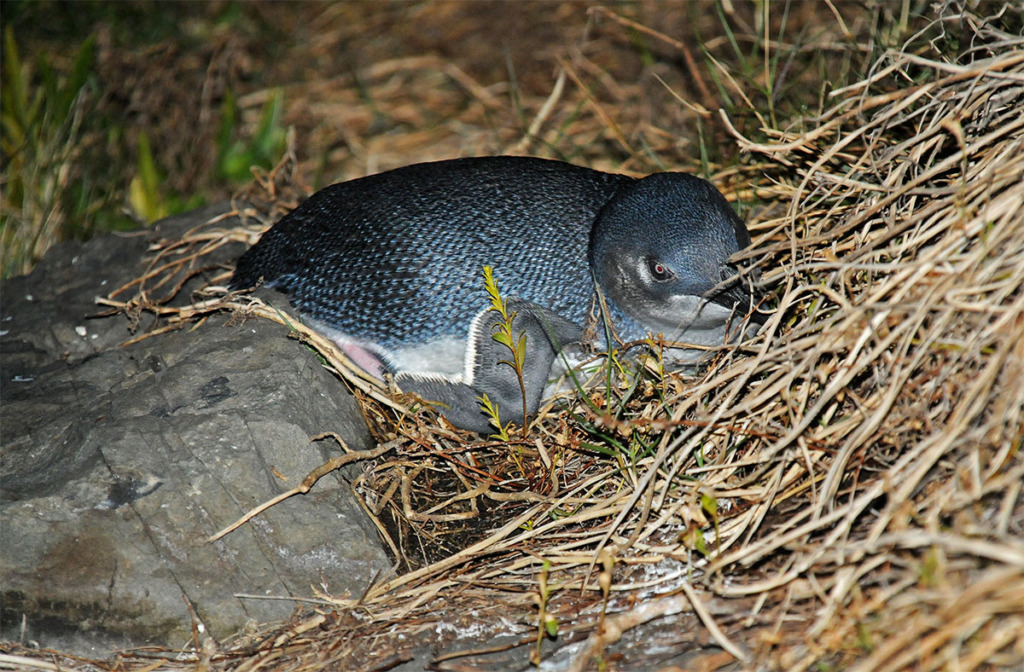
Waiting for the penguins
As graceful as they are in the water, the penguins appear very clumsy on firm ground. It was surprising that they picked the challenging terrain of Little Broughton island for their nesting site. To get from the surf to their nests they had to assail at least 100 meters of an incredibly steep cliff face. It was fun watching them wobble up the slippery rocks.
The night was still and quiet, the sky studded with stars. This moment on the rocky beach on an uninhabited island was perhaps one of the most tranquil experiences in my entire wildlife watching ‘career’.
To avoid disturbing the penguins, I turned my off torch and only switched it on briefly every five or so minutes to keep track of the penguins’ slow progress up the rocks. At one point I turned it on and there were two penguins sitting literally at my feet – one to the left and one to the right. In total only 4 birds emerged from the surf over 2 hours, meaning that there were at least 4 breeding pairs in that area.
Eerie sounds in the night
Unfortunately, as relaxing as it was, sitting there in the dark watching the penguins, my navigating adventures were not over for the night yet – I still had to make my way back to the camping site. As I started climbing up the cliff I came across one of the female penguins sitting on the nest. These birds have never encountered humans before and they were absolutely naïve of the dangers that some members of our species could pose. As it was, I could literally walk right up to the bird and pick it up, if I wanted to.
So there I was again: walking alone in the middle of the night across an uninhabited island. I would have loved to be able to say that it was peaceful and tranquil, but in fact, it was a little spooky. The Wedge-tailed Shearwaters became active and listening to their eerie calls while crashing through the bush alone in the dark wilderness was an interesting experience.
The birds were everywhere: on the ground, on the bushes and in the air. The night was alive with the sounds of their activity. Each time I would trip and fall I came face to face with one of them. And amazingly they were not afraid of me.
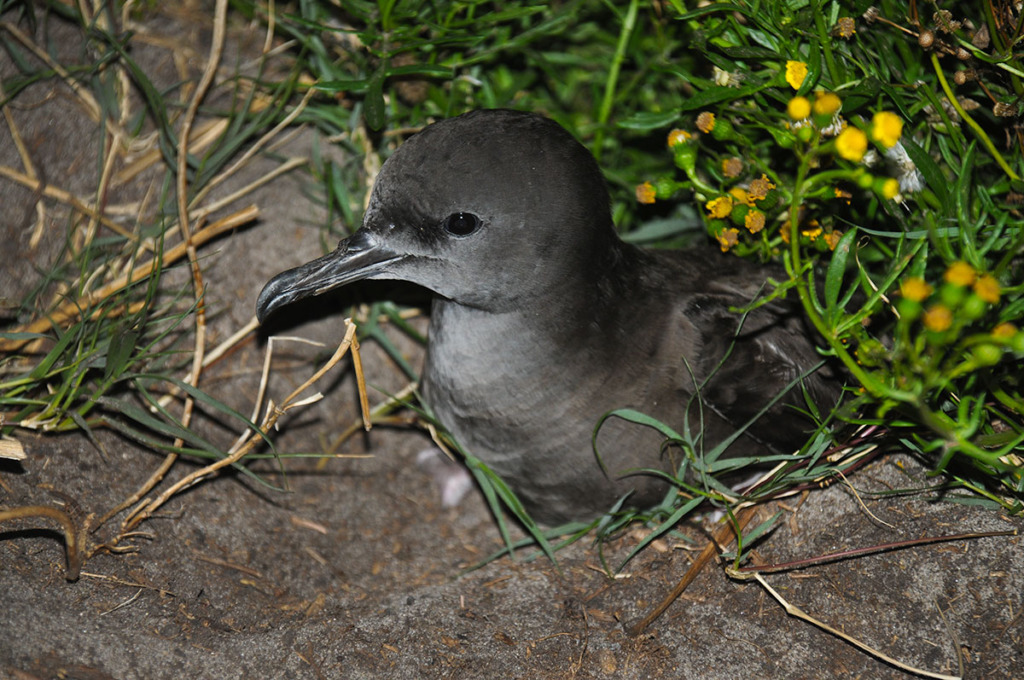
Camping in a bird colony
Back at the campsite, we had a quick dinner and went to sleep. The top of the island was very windy, so I didn’t bother with the tent and decided to sleep in my sleeping bag. That was the last time I made such a decision while sleeping in a seabird colony.
Shearwaters were everywhere and one of them decided to renovate its burrow right next to my face. The bird was completely oblivious to my presence and kept throwing piles of sand in my face. All night long the birds were running around, walking all over me as if I was a just a pile of ground litter.
As challenging as it was to sleep with all this activity around, I don’t think I have ever felt more ‘one with nature’ than I did that night. Being accepted by these birds as part of their natural environment was a very unique experience.
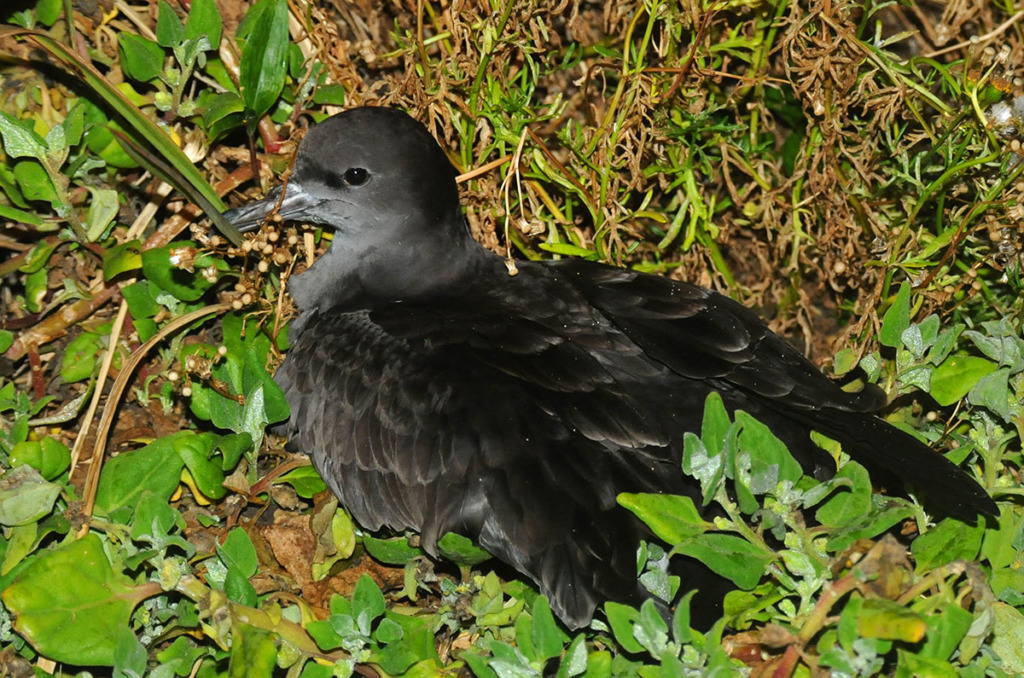
To top it all off, at about 5 am, one of the birds jumped onto my head while I was still asleep and started singing its eerie song. I guess my head was not an ideal surface for a bird with webbed feet to sit on, so it kept sliding off, and as it did, it dug its claws into my scalp to get a better grip.
When I woke up in the morning, I had sand in my mouth, in my ears, in my eyes and even in my nose. My eyebrows looked twice as thick with all the sand trapped in them. And to add insult to injury it started to rain. We still had more work to do and now we had to do it in the rain.
Day 2
First, Nick and I tracked across the island to another spot where he thought we might find more signs of the penguins. The reason we did not investigate this area the day before was that it had some particularly treacherous chasms – not a good place to get stuck in the fading light.
Even in broad daylight, Nick chose to go for a look alone while I entertained myself watching whales and garnets as they darted head-first into the ocean hunting for fish. After about an hour of searching, Nick was satisfied that there were no signs of the penguins and it was time to return to camp.
As we were climbing up a sandy patch, Nick accidentally stepped on a burrow and partially collapsed it. Fearing that there may have been a bird in the burrow we decided to excavate it and fix it up. And good thing we did. As Nick was digging the sand out, he first found an adult penguin there and then a tiny chick no more than couple of days old.
As I held the chick in the palm of my hand I was amazed how warm it was. All it was – was just a tiny ball of fluff.
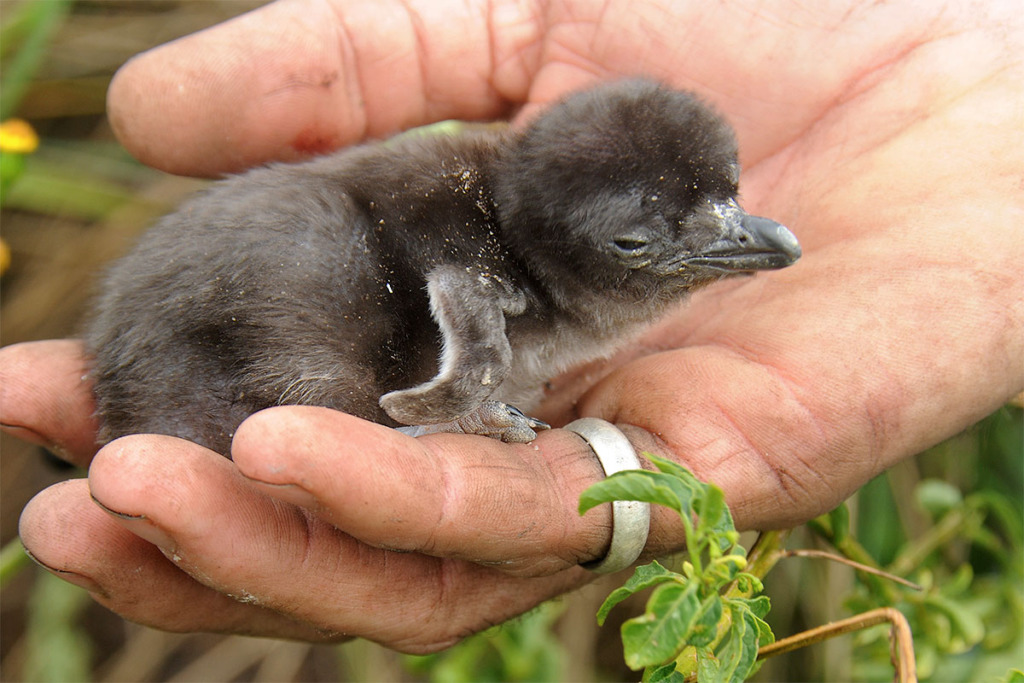
Next on the agenda was the mapping of shearwater habitat, which was also quite a challenging exercise given the terrain and the vegetation cover. To avoid having messy GPS tracks we first did reconnaissance walks to identify the boundaries of the ‘dug up’ areas and then walked the perimeter with the GPS units.
Off to the North Rock
Gradually we worked our way through the morning and early afternoon. Once we finished mapping, we were done with Little Broughton island. We packed up our camp and transferred all the bags and the equipment down to the zodiac landing site.
By the time the boat arrived to take us to the other islands, we were soaking wet from the rain, which had its positive side: we were not afraid to get wet while boarding the zodiac or landing on the next island.
We ferried all our staff onto the boat, hauled the zodiac onboard and set off for a short ride to the North Rock, where Susanna, me and Una (a fellow student from Macquarie University) were going to spend the next night, while Nick and Hanna were going survey to the East Rock.
The landing on North Rock turned out to be more adventurous than on Little Broughton island and all three of us ended up waist-deep in the surf. But since we were already wet, it wasn’t as dramatic as it could have been.
Exploring the North Rock
Once we set up camp, we went on our first reconnaissance mission around the island. North Rock is very small, so it didn’t take us long to cover all of it. We noted the areas where we would watch for the penguins at night and went to have a quick dinner before the nightfall.
The rain cleared up just as we were heading out into the night. Unfortunately, we did not find any penguins on the North Rock, but we did find a colony of beautiful White-faced Storm-petrels (Pelagodroma marina). These tiny little birds look so dainty, that it is hard to imagine that they brave the heavy storms at sea.
These birds also nest on the ground and Una, who was doing a PhD on Storm-petrels at the time, was quick enough to pick up one bird from the ground so we all got a good look at it.
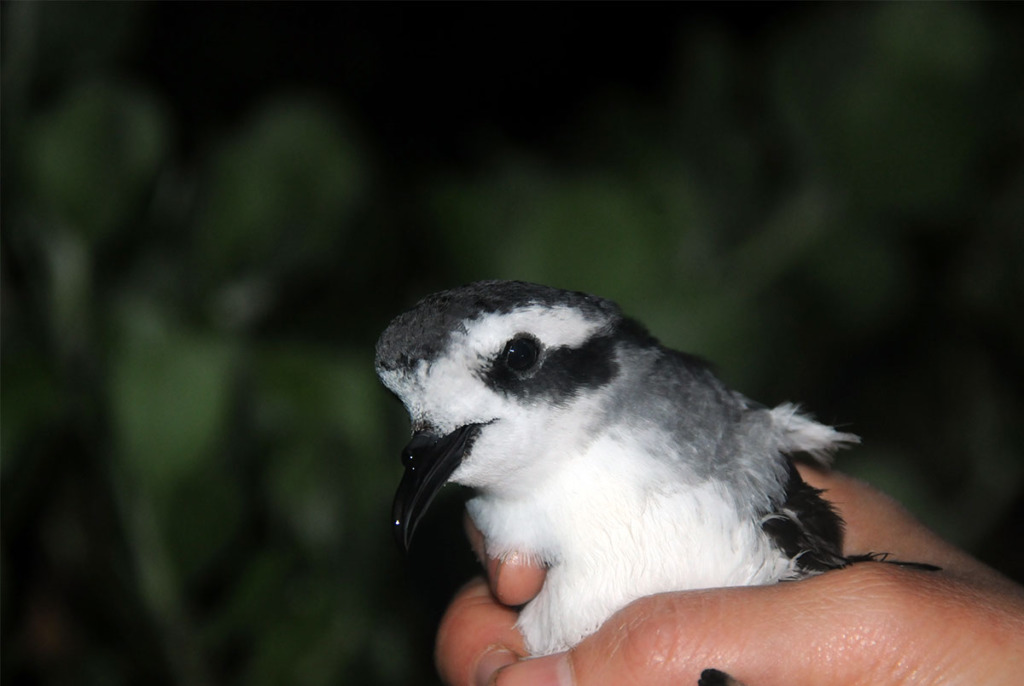
Another night under the stars
When we returned to camp we went straight to bed, opting to sleep without the tents, just in our sleeping bags again. This night we had a different menace. Shearwaters left us alone, but the mosquitoes were out with a vengeance.
They obviously don’t get many opportunities to feed on mammals on the island and we presented them with a feast of a lifetime. None of us got much sleep and when we emerged from our sleeping bags in the morning our faces were covered in red bumps of mosquito bites. However, that was not our biggest problem.
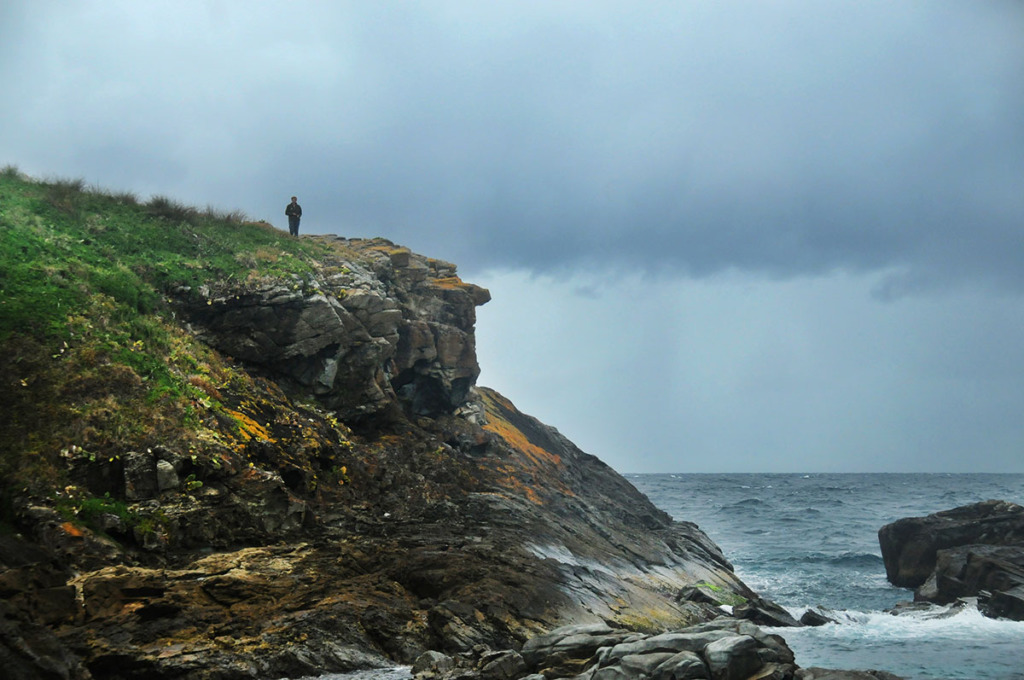
The weather has changed overnight and our landing site was no longer usable, as the current was going across it instead of towards it. The sea became quite rough, the sky was covered with menacing looking rain clouds and the wind was blowing a gale.
Susanna found a new spot where we could try to land the boat and when the boat arrived we transferred all our gear there. We set there waiting, but the Zodiac wasn’t coming. The swells were so big that as the boat rode the waves it constantly disappeared from view. Just as we started thinking that we would have to stay on the island until the weather improved, the Zodiac was lowered into the water and Nick was coming to get us.
Taking on the swells
The actual loading of Zodiac wasn’t that bad, but as we motored out toward the waiting boat, my mind struggled to comprehend the size of the waves. Three-meter-high swells look like Mount Everest when you are sitting on a low lying Zodiac.
Thankfully the waves were not breaking, so Nick steered the Zodiac in an almost vertical climb as the waves approached. I should have panicked, given that I can’t swim, but I don’t remember being scared. We were in the boat, we were committed, and there was simply no way out of the situation but to push on towards the bigger boat.
Finally, we made it and Nick made another trip to the rock to pick up Una and Susanne. With the last glance at the North Rock, we said goodbyes to the amazing birds that call these wild islands home and settled in for the bumpy ride towards Port Stephens. At last, we were headed towards civilization and hot showers…
